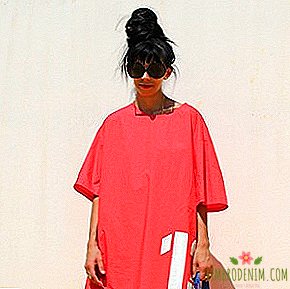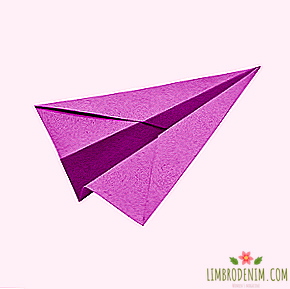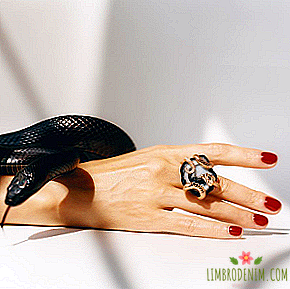How did the fashion for hair color in the last 100 years
Text: Daria Evans-Radova
In the twentieth century came the heyday of hair coloring. The reason is quite clear: the technology of lightening and giving a different color has become so affordable that not only the rich could afford it. Dyed hair has ceased to be an indicator of status, but it began to reflect the individual taste of a particular person or a social group. In the past, we studied how stereotypes about hair color and character were formed up to the 20s of the last century, and now we tell you who set the fashion for a particular hair color and what our hair waits on.
30s

At this time, the term "platinum blonde" first appeared, in English it is a blond bombshell, and along with it the first canonical owner of blond hair - actress Jean Harlow. Marilyn Monroe at that time was still literally in a manger. Calling the movie Platinum Blonde, Howard Hughes wanted to capitalize on the young star's hair color. The film had "hoo what!" success, and with it the brightening paint that fans of the young Jean dared off the shelves. Men found the image of a platinum blonde bright and sexy, and women - worthy of imitation. By the way, the actress did not admit that she dyed her hair, claiming that the shade was given to her by nature. Harlow died at the age of 26, bedridden and losing hair. She once said: "If it were not for the hair color, in Hollywood they would never know about my existence."
50s

Brightening hair dye has reached a new level. The Miss Clairol Hair Color Bath formula appeared, which allowed women to dye their hair at home - this was important because women preferred not to advertise this fact. Of course, they tried to walk on Marilyn Monroe, for whom the image of the canonical blonde was fixed, despite other predecessors. The actress has become a symbol of sexuality and sensuality. Her image was built solely around femininity and appearance: languid eyes, spicy fly, thin arrows, scarlet lips and, of course, taut bright curls. Marilyn so monopolized her hair color that it began to be perceived almost inextricably from her.
At that time, while Monroe occupied America’s fantasies, Brigitte Bardot was very popular in Europe, which she also called the “sex symbol” with a light hand of cinema. After the film "And God Created a Woman," the image of Bardo became the starting point in assessing female attractiveness. And again he contributed to the formation of the stereotype about the blonde in the context of his sexuality. In the golden era of Hollywood divas, Grace Kelly, the highest grossing actress of her time, and one more role model, were close to incredible popularity, approaching which, again, due to hydrogen peroxide.
60-70s

At this time, the supermodel Twiggy appears and, together with its short haircut, brings a completely new aesthetic into fashion. Although Twiggy herself let slip something about not wanting to look like Marilyn Monroe, she, in general, pushed her far along with Hollywood standards. Sexuality and attractiveness are no longer associated with the languid yoke blonde.
Although blond hair is still very popular. L'Oréal has an advertising slogan “After all, you deserve it” - the company produces lightening paint, which it calls the most expensive in America. From there and "After all, you deserve it." In addition, attitudes toward hair lightening are changing in society: women no longer hide the fact that they resort to dyes. Light hair is not limited to everything. Women are experimenting, completely different characters appear on the world stage: Audrey Hepburn, Jane Birkin, Twiggy, Jackie Kennedy, Brigitte Bardot, Cher. In addition, there is finally a tendency to dye hair in bright colors, thanks to the punk movement. Hair color becomes a way of expressing one’s position.
In the USSR, the fashion for dyed hair broke out in 1963. Hair began to dye not only in order to hide gray hair, but also to express individuality. Specialized paints in the USSR was not, therefore, treated improvised means. Henna was used for ginger shades, henna and basma were mixed for chestnut shades. Onion peel was used for clarification, and if radical changes were desired, hydrogen peroxide was far from safe. From there, and went the expression "perhydrol blonde." The appearance of a "mature woman with lilac / blue hair" appeared at the same time. They achieved a shade simply - they added the most ordinary ink to the water. The fashion model was a fashion model Regina Zbarskaya. In the late 60s, the first real paint was brought to the USSR - from the GDR.
80s

Turn on the TV in the 80s - you immediately try to sell hair dye. On the screen, Cybill Shepherd, Heather Locklear and other celebrities are promoting new products to change hair color. Also, brands are beginning to cooperate with Hollywood celebrities of the 30s in order to show in advertising how the paint rejuvenates and refreshes them. Highlighting of hair is in fashion, creative coloring - Madonna changes hair color almost every month, blond is still popular - Princess Diana wears it, but it is fashionable to have natural long hair like Brooke Shields.
90s

Dyes are improving - they become more resistant, but softer for the structure of the hair. Manufacturers of paint suddenly became puzzled by the brilliance, therefore dyes of this period bear eloquent names with the word "shining". The trend from bright colors of the 70s-80s is shifted in favor of natural shades. Among blondes, this is Claudia Schiffer, who is unlike Kate Moss, Gwen Stefani, Uma Thurman, Gwyneth Paltrow, Drew Barrymore, Sharon Stone, Pamela Anderson.
Jennifer Aniston even made the American salons survive the mass hysteria. After her role in "Friends", hairdressers barely cope with the flow of visitors who want "hair like Rachel's." Among the brunettes popular images of Demi Moore, Victoria Beckham, Tyrah Banks, Cindy Crawford, Winona Ryder. The tendency to dye hair in poisonous-bright colors, originated in the 70s, also takes place - among Japanese adolescents it is fashionable to dye hair in grass-green color.
2000s

At zero, it seems, everyone remembered at the same time that they had not dyed their hair for a long time, and, in fact, they caught on. You will not see colorings in one tone - at least two shades together, and all is better and at once. And even better - like Christina Aguilera. That is, blond hair with burgundy and black strands. In addition, the “white top, black bottom” is popular, when the top layer of hair is left in blond and the bottom color is chestnut colored - like Nicole Richie. Jessica Simpson has bright highlights on her dark hair, and Avril Lavigne has pink highlights. Beyonce masters the ombra, Rihanna paints the individual strands. Miley Cyrus is blonde. Pink, without bothering, dyes her hair blue, and Gwen Stefani highlights white. Madonna as regularly changes hair color from the 80s - and changes.
2010s

In the 2010s, the ombre confidently took the lead among the varieties of coloring. It probably became a logical compromise that came to us through the entire history of staining. Ombre is applicable to all shades of hair, it is easy to maintain, for a change it can always be tinted with a bright color, and brunettes can approach blondes without having to commit special obligations to color. And the main thing for everyone is that there are no problems with regrown roots, and the ombra, one might say, has legalized them. It seemed that everyone tried it - from Kim Kardashian to Jared Leto. In addition to the ombre, in 2010, shatush, armor, balayazh, and also a California blonde appeared.
What hair will be in the future? The fantasy of cinema here is limited to two extremes: it is either hair of bright colors with fancy styling and accessories, like in “The Hunger Games”, or minimalistic, “sleek” hairstyles and hair of natural shades. However, most likely, we will not have them at all, or very little - this is the opinion of science from the time of Charles Darwin, who considered hair to be a rudiment, in this regard. Firstly, our ancestors had much thicker hair to protect them from the weather, now the need for this has disappeared. Secondly, the hair color will begin to darken. Sterns, a professor at Yale University, is confident that globalization will lead to averaging of appearance traits, and brunettes and brunettes in the world's population will overwhelm the majority. As a result, you can estimate two options: rare dark hair, or their absence. It should be noted that the latter option would be much more practical for implanting different chips and microcircuits there. The future is the same.
Photo: 1, 2, 3 via Wikipedia, 4, 5 via Wikimedia Commons, Warner Bros. Television, Kim Kardashian West / Instagram




